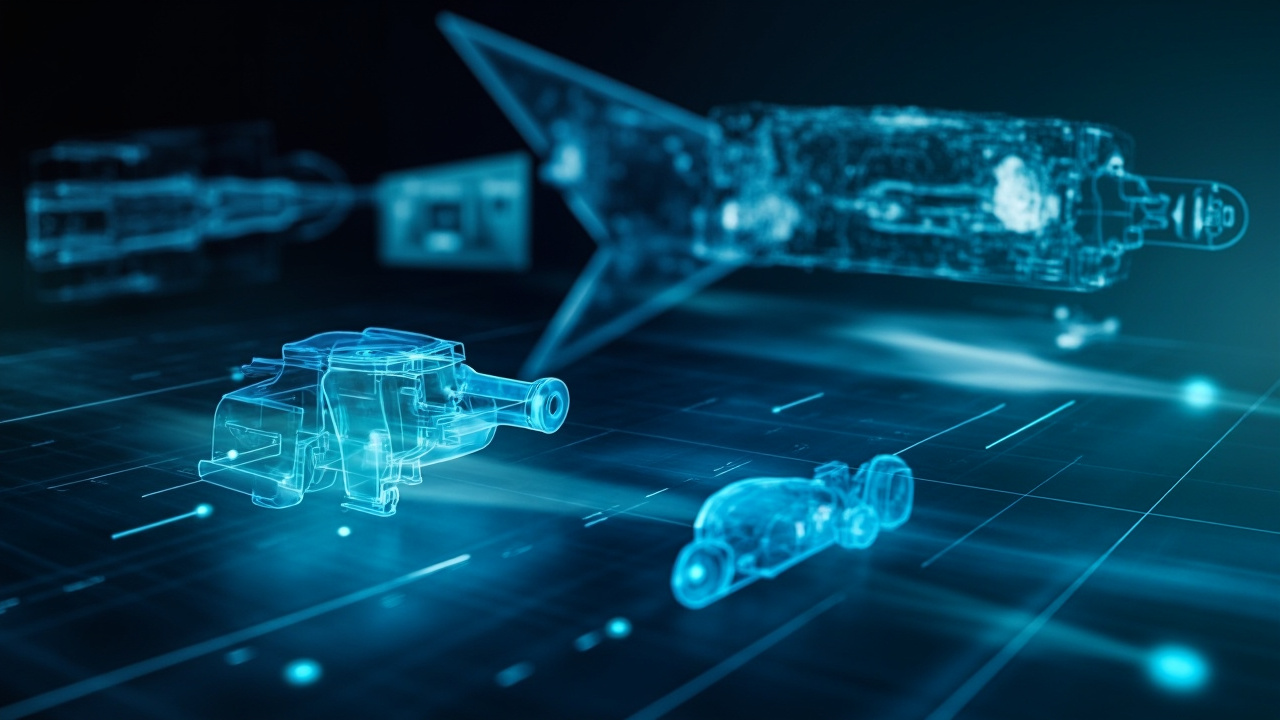In the ever-evolving realm of software development, the demand for high-quality applications is at an all-time high. Companies are under immense pressure to deliver reliable software faster than ever, while simultaneously contending with increasing complexity and rapid technological advancements. In this landscape, traditional software testing methods often fall short. Enter the era of Artificial Intelligence (AI), promising transformative improvements in software testing efficiency and effectiveness.
AI-driven tools are poised to redefine how we approach quality assurance, introducing automation, precision, and adaptability into the testing process. This article explores the profound impact of AI on software testing, addressing the challenges faced by conventional methods and presenting innovative solutions that are shaping the future of quality engineering.
The Evolution of Software Testing: From Manual to AI-Enhanced

At the heart of software development lies the critical process of testing a task that demands both meticulous attention to detail and an extensive commitment of resources. Traditionally, this has been a manual endeavor, heavily reliant on human testers to design, execute, and analyze test cases. However, as software systems grow in complexity, the limitations of manual testing become painfully apparent.
The Limitations of Traditional Testing
Manual testing, while thorough, is inherently slow and prone to human error. The sheer volume of test cases required for comprehensive coverage can be overwhelming, leading to inevitable gaps in testing. Furthermore, manual processes struggle to adapt quickly to changes, often resulting in bottlenecks that delay product releases. Consider a scenario where a team is testing a mobile application that receives frequent updates. Each update requires a meticulous review of the existing test cases to ensure they are still relevant, a task that can consume significant resources and lead to delays.
“Manual testing, while thorough, is inherently slow and prone to human error.”
The Rise of Automated Testing
Automated testing emerged as a solution to these challenges, offering a way to execute repetitive tasks with greater speed and consistency. However, even with automation, significant challenges persist. The creation and maintenance of test scripts require substantial effort, and automated tests can falter when faced with dynamic changes in software environments. For instance, a change in the user interface of a web application can cause automated tests to fail, necessitating updates to the test scripts.
AI: The Next Frontier in Software Testing
AI’s introduction into software testing is a game-changer. By leveraging machine learning and intelligent algorithms, AI-driven tools can not only automate testing processes but also enhance them. AI systems can dynamically generate test cases, predict potential defects, and adapt to changes effortlessly, ensuring a more robust and reliable testing process. Tools like GenQE offer advanced capabilities in this domain, providing intelligent solutions that adapt to the evolving needs of modern software environments.
Harnessing AI for Intelligent Test Case Generation

One of the most revolutionary applications of AI in software testing is in the generation of test cases. Traditional methods require meticulous planning and design, often resulting in a significant investment of time and resources. AI, on the other hand, brings a new level of efficiency and precision to this critical task.
The Process of AI-Driven Test Generation
AI-powered tools analyze software requirements, historical test data, and user behavior to automatically create comprehensive test cases. This approach not only accelerates the test design process but also enhances the coverage and relevance of the tests. For example, by examining patterns in user interactions, AI can identify common paths through an application and ensure that these are thoroughly tested.
“AI’s ability to analyze vast amounts of data ensures that test coverage is both broad and deep.”
Reducing Manual Effort and Increasing Coverage
By automating test case generation, AI reduces the dependency on human intervention, freeing up valuable resources for more strategic tasks. Moreover, AI’s ability to analyze vast amounts of data ensures that test coverage is both broad and deep, capturing edge cases that might otherwise go unnoticed. In the case of a complex financial application, AI can ensure that all transaction types are tested, including rare edge cases that might be missed in manual testing.
Practical Applications and Benefits
Consider a scenario where a software development team is tasked with testing a complex e-commerce platform. Utilizing AI-driven test generation, the team can quickly generate test cases that cover a wide range of user interactions, payment methods, and device configurations, ensuring a seamless user experience across the board. This not only accelerates the testing process but also reduces the likelihood of critical defects slipping through to production.
Smart Test Execution: Prioritizing What Matters

The execution phase of testing is just as crucial as the design, and AI plays a pivotal role in optimizing this process. By intelligently prioritizing test execution, AI ensures that critical areas are tested first, maximizing the impact of testing efforts.
Risk-Based Test Prioritization
AI tools employ risk analysis to determine which test cases should be executed first, focusing on areas that are most likely to contain defects. This strategic approach minimizes the likelihood of critical issues slipping through the cracks and reaching production. For instance, in a healthcare application, AI can prioritize testing of critical patient data processing features, ensuring that any defects in these areas are identified and addressed promptly.
Enhancing Efficiency and Reducing Downtime
In traditional testing, the execution of a comprehensive test suite can be time-consuming and resource-intensive. AI-driven prioritization streamlines this process, allowing teams to focus on high-impact tests and reducing unnecessary downtime. This is particularly beneficial in environments with limited testing windows, such as nightly builds and deployments.
“Smart test execution allows teams to focus on high-impact tests and reduces unnecessary downtime.”
Real-World Example: Banking Software
Imagine a banking application undergoing a major update. With AI-powered test execution, the testing team can prioritize test cases related to security features, transaction processing, and user authentication areas that are critical to the application’s reliability and security. This ensures that any potential vulnerabilities are addressed before they can impact customers.
The Power of Self-Healing Automation

One of the perennial challenges in software testing is the maintenance of test scripts. As software evolves, changes to user interfaces or underlying architecture can render existing test scripts obsolete. This is where AI’s self-healing capabilities come into play.
Understanding Self-Healing Automation
Self-healing automation refers to AI’s ability to automatically adjust test scripts in response to changes in the software environment. When UI elements are modified or moved, AI algorithms update the corresponding test scripts, ensuring that tests continue to run smoothly without manual intervention. This capability is particularly valuable in agile development environments, where changes are frequent and rapid.
Benefits of Self-Healing in Dynamic Environments
In fast-paced development environments, where frequent updates and changes are the norm, self-healing automation significantly reduces maintenance efforts and minimizes downtime. This leads to faster release cycles and a more agile development process. Teams can focus on developing new features rather than constantly updating test scripts, increasing overall productivity.
“Self-healing automation significantly reduces maintenance efforts and minimizes downtime.”
Case Study: E-Commerce Platform
Consider an e-commerce platform that regularly updates its product catalog and user interface. With AI’s self-healing automation, test scripts are automatically adjusted to accommodate these changes, ensuring continuous testing and quality assurance without interruption. This capability ensures that new products and features are tested thoroughly, reducing the risk of defects affecting the user experience.
Comprehensive Test Coverage Across Platforms

In today’s digital landscape, applications must perform flawlessly across a multitude of platforms, including web, mobile, APIs, and cloud environments. AI-driven testing tools excel in providing comprehensive coverage, ensuring that software functions seamlessly across diverse devices and operating systems.
The Challenges of Multi-Platform Testing
Testing across multiple platforms presents unique challenges, from varying device specifications to differing operating systems and user interfaces. Ensuring consistent performance and functionality across all these variables is no small feat. For example, a mobile application may behave differently on iOS and Android, requiring tailored test cases for each platform.
AI’s Role in Ensuring Seamless Functionality
AI tools are adept at managing the complexities of multi-platform testing. They automatically generate and execute test cases that account for platform-specific nuances, ensuring that applications deliver a consistent user experience regardless of the device or environment. This capability is essential for applications that aim to provide a seamless experience across various touchpoints.
“AI tools ensure applications deliver a consistent user experience regardless of the device or environment.”
Example: Mobile Application Development
In mobile application development, where device fragmentation is a significant concern, AI-driven testing can quickly identify compatibility issues and performance bottlenecks, enabling developers to address these challenges proactively. This approach ensures that users enjoy a smooth experience, whether they are using the latest smartphone or an older model.
Early Defect Detection with AI-Powered Analysis

Detecting defects early in the development cycle is crucial for maintaining software quality and reducing costs. AI’s ability to analyze test results and identify patterns plays a vital role in early defect detection.
Leveraging Machine Learning for Defect Detection
AI tools utilize machine learning algorithms to analyze test data, identifying anomalies and potential defects before they escalate into critical issues. This proactive approach not only ensures higher software quality but also reduces the time and cost associated with fixing defects post-release. For example, by analyzing logs from test executions, AI can identify patterns that indicate a potential defect, allowing teams to address it before it impacts users.
The Impact on Development Cycles
By catching defects early, AI-driven analysis shortens development cycles and accelerates time to market. Teams can focus on refining features and enhancing user experience rather than firefighting production issues. This approach also supports a more iterative development process, where feedback can be incorporated quickly and effectively.
“By catching defects early, AI-driven analysis shortens development cycles and accelerates time to market.”
Real-World Scenario: Automotive Software
In the automotive industry, where software reliability is paramount, AI-powered defect detection can identify potential issues in safety-critical systems early in the development process, ensuring that vehicles meet the highest standards of quality and safety. This capability is crucial for maintaining consumer trust and meeting stringent regulatory requirements.
Integrating AI Tools Seamlessly into DevOps Pipelines

In the modern software development landscape, continuous integration and continuous deployment (CI/CD) are integral to maintaining agility and efficiency. AI tools, such as GenQE, seamlessly integrate into these pipelines, enhancing testing capabilities and streamlining the overall development process.
The Role of CI/CD in Modern Development
CI/CD practices ensure that software changes are automatically tested and deployed, reducing the cycle time for new features and updates. However, integrating testing into these pipelines can be challenging, particularly when dealing with complex environments and large codebases. The need for rapid feedback and continuous quality assurance is paramount.
AI’s Contribution to CI/CD Efficiency
AI-powered testing platforms like GenQE integrate smoothly with popular CI/CD tools such as Jenkins, GitHub Actions, and Azure DevOps. This seamless integration allows automated testing to become a natural part of the development pipeline, ensuring continuous quality assurance. By automating testing processes, AI reduces manual intervention and potential errors, enhancing the overall reliability of the software delivery process.
“AI integration into CI/CD pipelines ensures continuous quality assurance and rapid feedback.”
Example: Enterprise Software Development
For enterprise software development teams, integrating AI tools like GenQE into their CI/CD pipelines ensures that quality checks are automated and consistent, reducing the time and effort required for manual testing and enabling faster delivery of high-quality software. This integration supports the scalability and reliability required for managing large-scale projects with multiple stakeholders.
Conclusion: Embracing the Future of Software Testing

The integration of AI into software testing is not merely an enhancement it’s a transformation. By automating and optimizing various aspects of the testing process, AI empowers teams to deliver high-quality software more efficiently and effectively. From intelligent test case generation to early defect detection, AI-driven tools are revolutionizing how we approach quality assurance.
As the demands on software development continue to grow, embracing AI-powered solutions like GenQE can provide the competitive edge necessary to thrive in this fast-paced industry. By improving testing efficiency, reducing costs, and accelerating time to market, AI is poised to become an indispensable ally in the quest for software excellence.
For organizations seeking to elevate their software quality practices, exploring AI-driven tools and methodologies is a worthy journey. GenQE represents just one of many innovative solutions paving the way for a smarter, more reliable future in software testing.
“For organizations seeking to elevate their software quality practices, exploring AI-driven tools and methodologies is a worthy journey.”
By leveraging the power of AI in software testing, we are not just keeping pace with the demands of modern development we are setting the stage for a new era of quality engineering. Whether you’re a developer, tester, or quality assurance professional, the opportunities to harness AI for improved testing processes are boundless. Explore the tools and technologies that can elevate your testing strategy and lead your organization into the future of software excellence.
Discover More Innovative Solutions
Want to learn more about the tools and technologies discussed in this article? Explore how these innovations can be tailored to your specific needs and workflow requirements.
Our team of experts is available to answer your questions and provide personalized insights into how modern solutions like GenQE can address your specific challenges.
If the link above does not work, please visit: https://calendly.com/dm-csimplifyit/30min?month=2025-05